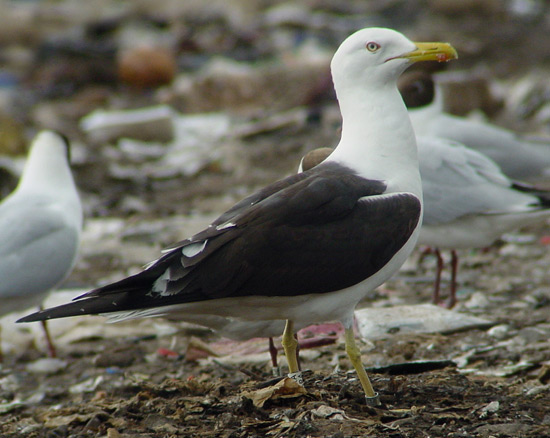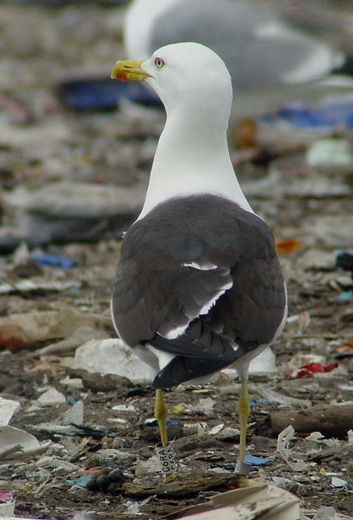(5 images) Larus fuscus fuscus C6RA , August 2002 (3cy) & July 2003 (4cy), Tampere, Finland (61.33N 24.59E).
C6NS was ringed in Luopio, Finland
(61,35N 24,50E);
ringed as pullus on July 01 2000 by Risto Juvaste.
Read
ring records, most at Tampere landfill:
2000-08-11,
2002-05-08,
2002-05-09,
2002-05-11, 2002-05-13, 2002-05-15, 2002-05-16, 2002-05-18, 2002-05-19, 2002-05-22
(Hlinna, Finland 60,98-24,46), 2002-05-25, 2002-05-26, 2002-05-28, 2002-05-31, 2002-06-01,
2002-06-08,
2002-06-09, 2002-06-11, 2002-06-14, 2002-06-15, 2002-06-16,
2002-06-17, 2002-06-21, 2002-06-22, 2002-06-23, 2002-06-29,
2002-07-01, 2002-07-03, 2002-07-07, 2002-07-09, 2002-07-13, 2002-07-14,
2002-07-15, 2002-07-16, 2002-07-19, 2002-07-23, 2002-07-27,
2002-07-28, 2002-08-02, 2002-08-03, 2002-08-06, 2002-08-08, 2002-08-09,
2002-08-10, 2002-08-12,
2002-08-18,
2002-08-24,
2003-05-17, 2003-05-18, 2003-05-24, 2003-05-25, 2003-05-29, 2003-05-30,
2003-05-31, 2003-06-03, 2003-06-14, 2003-06-17, 2003-06-20, 2003-06-28,
2003-07-05, 2003-07-06, 2003-07-09, 2003-07-13, 2003-07-14,
2003-07-15, 2003-07-16,
2003-07-20, 2003-07-23.
Ringed as pullus on July 01 2000 in Luopio, Finland, white C6RA. White tail with black markings on the outer tail-feather R6. Primary moult has been arrested on two places: most recently the inner two primaries P1-P2 have been replaced, but another moult wave was arrested on P6, with P7-P10 old and brown bleached second generation. Note the bleached brown lesser and lower lesser coverts and the 'jumpy' pattern of moult in the greater and median coverts. The bill shows obvious black markings near the gonydeal angle.




